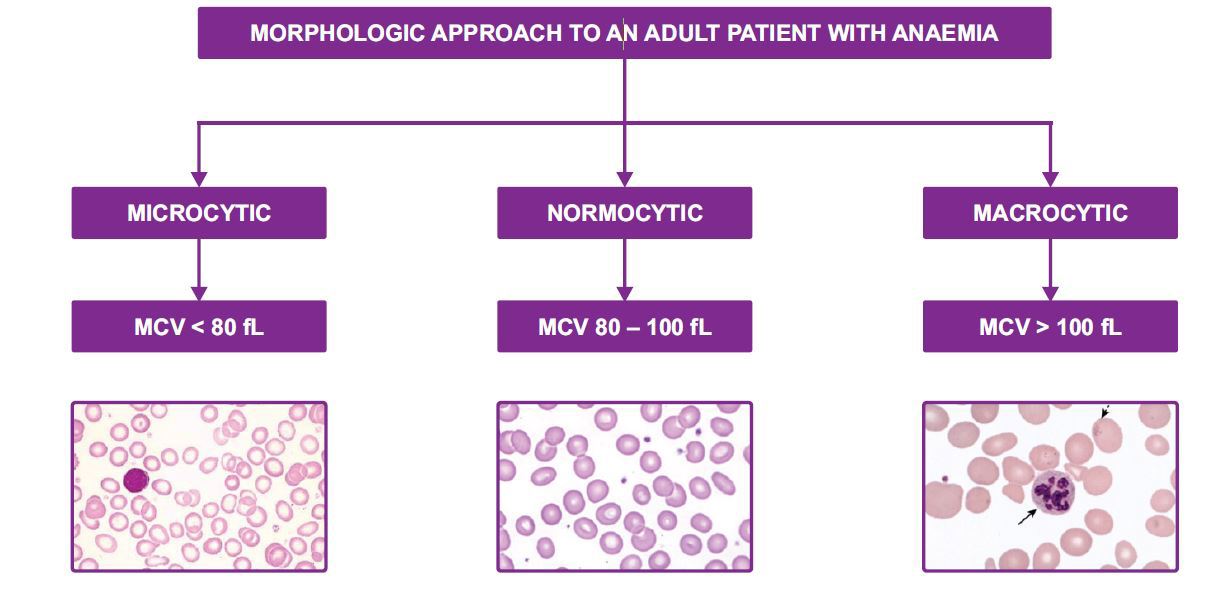Approach to the Adult Patient with Anaemia
Anaemia is defined as a reduction in one or more of the red blood cell indices of haemoglobin (Hb) concentration, hematocrit, and red blood cell (RBC) count. However, haemoglobin concentration is the most widely used parameter.
Normal lower limits of Hb varies with age, sex and race.
As a clinician, one is often familiar with the Kinetic Approach to a patient with anaemia. This approach classifies anaemia by the mechanisms causing the anaemia. These mechanisms are decreased red blood cell production, increased red blood cell destruction and blood loss.
However, when one is faced with interpreting a patient's full blood count result, and anaemia is present, the Morphologic Approach can be used to work through the possible causes of the anaemia. The morphologic approach divides anaemia into Macrocytic Anaemia, Normocytic Anaemia and Microcytic Anaemia, based on the size of the red blood cells.
The parameter in the full blood count that indicates red cell size is the Mean Corpuscular Volume (MCV) measured in femtolitres (fL).

The following tables outline the causes of Microcytic and Normocytic Anaemia. Macrocytic Anaemia will be discussed as a separate topic in a follow-up newsletter.
